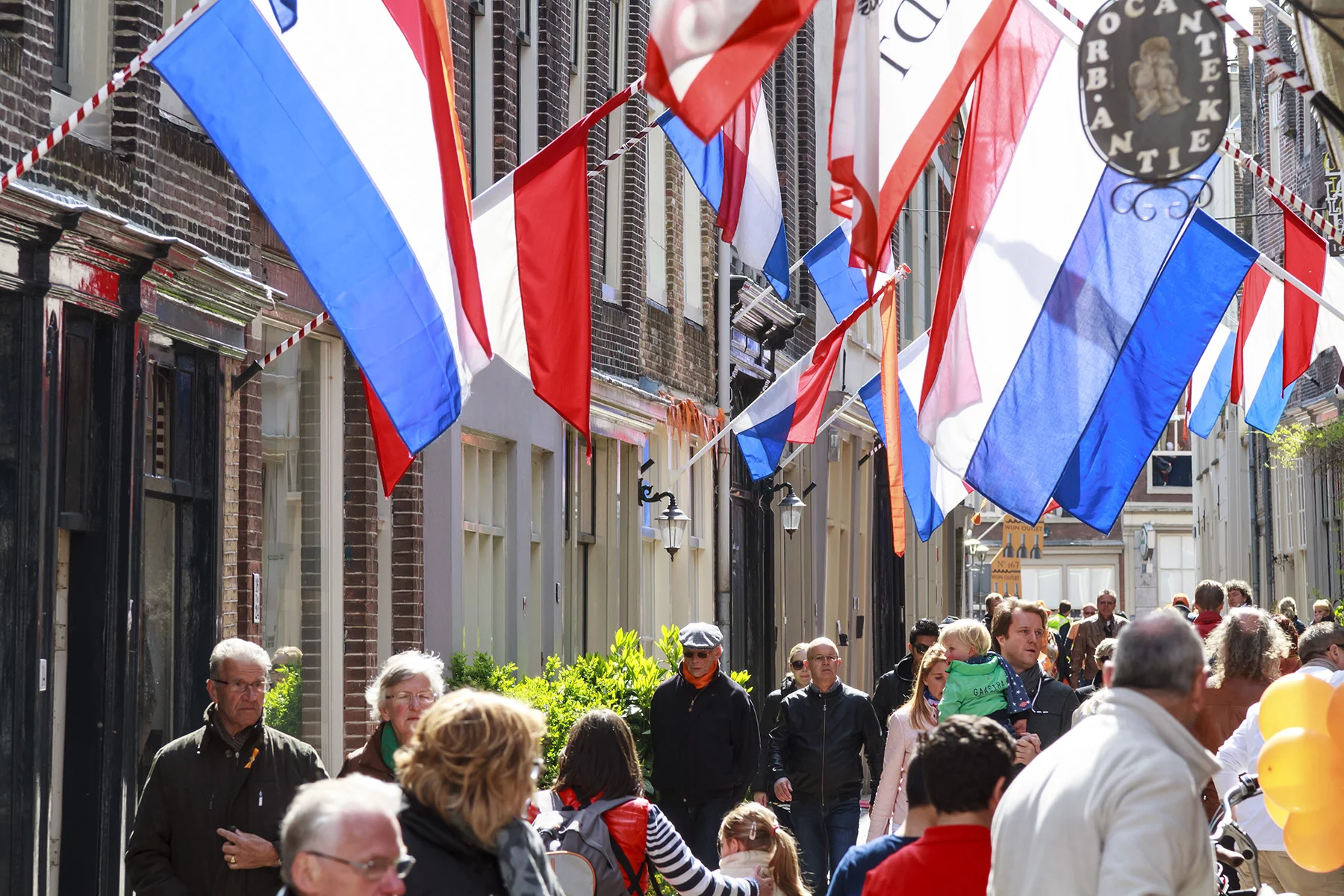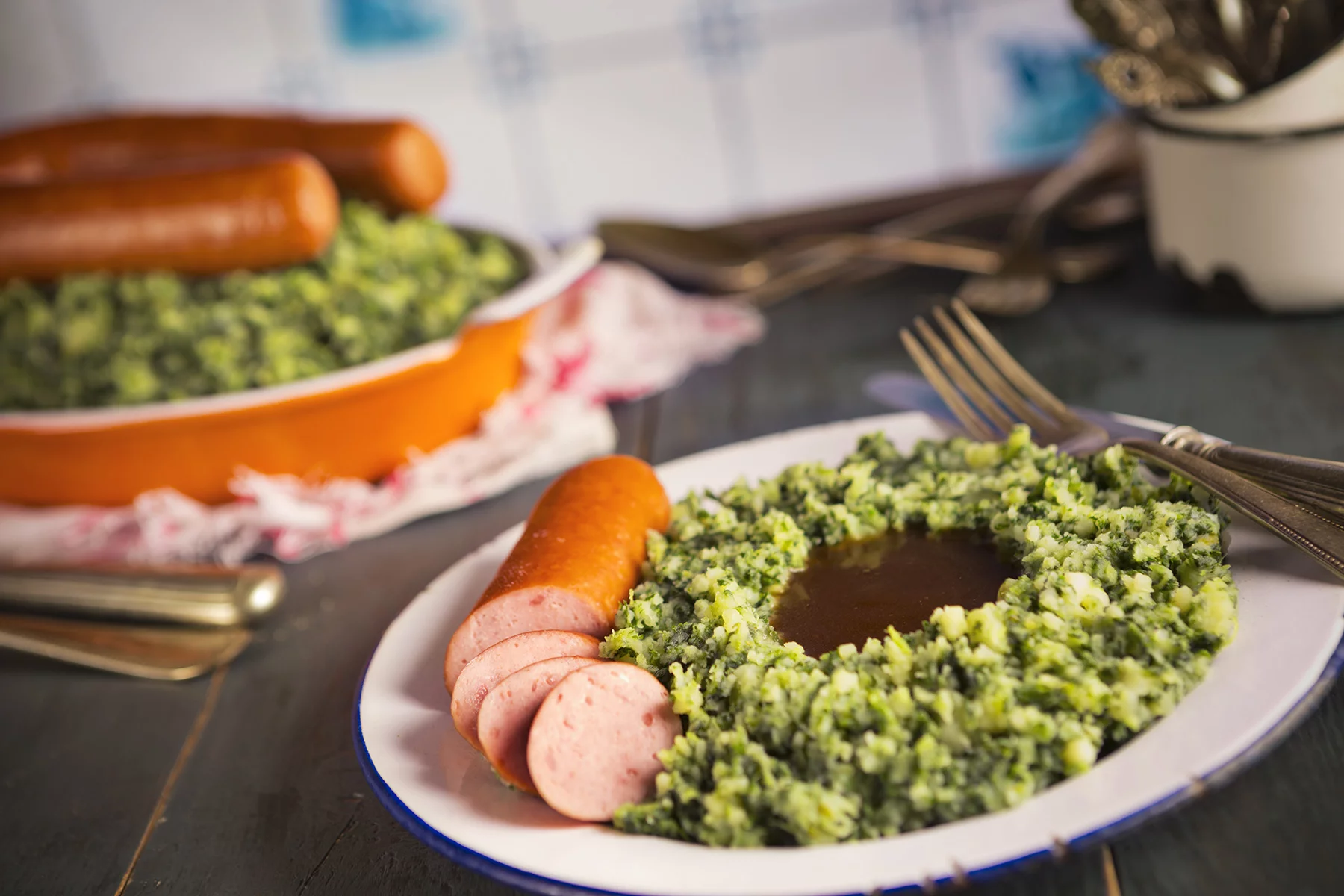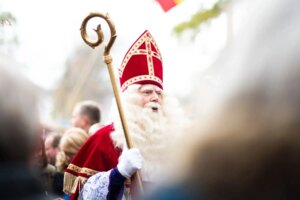Fairy lights, sweet treats, beloved TV specials… The Netherlands knows how to make the season feel warm and welcoming. Whether you’re an expat, a visitor, or just curious, these customs are sure to offer a fresh take on holiday cheer – and maybe even inspire you to adopt a few.
So, let’s dive into 10 Christmas traditions that offer a Dutch take on holiday cheer:
N26
N26 is the bank you’ll love to use: open your bank account in just eight minutes with no paperwork. Take control of your finances with one app where you can manage limits, set your PIN, lock/unlock cards, and make no-fee transactions anywhere in the world.
1. Christmas markets
The Netherlands sparkles with festive magic each December as its Christmas markets bring the holiday cheer to life. Stroll through vibrant fairs with twinkling lights, the scent of hot chocolate, and the hum of cheerful chatter.
Iconic markets in Amsterdam and The Hague offer more than just shopping. You’ll find ice skating rinks, live music, and plenty of glühwein to keep the festive spirit warm and bright.
For a cozier storybook vibe, head over to your local garden or home improvement center because that’s where the Dutch hide the real Christmas magic.
2. Kerstpakket
One cherished Dutch holiday tradition is the kerstpakket, or “Christmas package.” This is a mystery gift that employers present to their workers each December to show their appreciation.
These packages, often filled with luxurious foods, were historically meant to add a little extra joy to holiday celebrations. While traditional kerstpakketten still delight many, modern variations now include gift cards or even a Christmas bonus, offering a more flexible way to spread festive cheer.

The kerstpakket is more than just a holiday perk. It’s a key component of Dutch Christmas traditions, and employers face significant pressure to get it right. Indeed, a lackluster or absent gift can lead to disgruntled employees.
This was demonstrated in 2022 when Dutch retailer Bijenkorf sparked controversy by upcycling one of its products into an underwhelming package. The backlash was so intense it even led to employee strikes, highlighting just how much this tradition means in Dutch workplaces.
3. Christmas tree
Like elsewhere, the Christmas tree (kerstboom) plays a key role in setting the festive mood. While its roots trace back to Germany, the Dutch have embraced this Christmas tradition wholeheartedly. The trees – whether real or artificial – are often decorated with sparkling lights, round and funny-shaped ornaments, and tinsel.
Dutch households typically wait until after Sinterklaas (5 December) to put up their Christmas tree, ensuring the two traditions don’t clash. The tree stays up through New Year’s and is usually taken down after Epiphany (Driekoningen) on 6 January, making it a centerpiece of the festive season.
4. Christmas cards
Sending Christmas cards has long been a charming tradition for Dutch families and friends to share holiday cheer. Whether it’s a simple “Fijne Kerst!” or a personal message filled with festive spirit, the tradition has brought smiles to mailboxes for decades.
While fewer people are writing cards today, the ones that do receive one feel all the more special – like a thoughtful surprise amidst the busyness of the season.

Modern technology offers fun ways to reinvent this tradition. From designing personalized e-cards online to creating printed cards with custom photos, there are plenty of creative options to spread the Christmas cheer.
5. Lights and decorations
As the winter season arrives, cities and towns across the Netherlands embrace a cozy, festive vibe with Christmas lights and decorations. Canals in major cities like Amsterdam and Rotterdam sparkle with creative installations, while smaller cities and towns go for subtle light displays that light up shopping streets and public squares.
In true Dutch fashion, homes and neighborhoods keep things simple yet festive. Wreaths made of evergreen branches, berries, and ribbons often adorn front doors, while strings of lights brighten windows and gardens. It’s less about grandeur and more about adding a warm glow to chilly winter evenings and creating a welcoming, cozy atmosphere.
6. Advent calendar
In the Netherlands, many people enjoy the festive countdown to Christmas with an advent calendar (adventskalender). This typical Dutch tradition adds a daily dose of joy to the colder days, especially for children.

Each day, a tiny door reveals a sweet surprise (typically chocolate, candy, or a small toy), building excitement as Christmas Eve approaches. In recent years, however, advent calendars have evolved into something much more creative, especially for adults.
Beyond the classic treats, you’ll now find calendars filled with beauty products, fancy teas, craft beers, and even premium liquor. And for those feeling adventurous, there are cheekier options featuring erotica, proving that this playful tradition has something for everyone.
7. Two Christmas days
In the Netherlands, Christmas comes with a unique twist – two full days of festive cheer! Eerste Kerstdag (First Christmas Day) on December 25 is traditionally reserved for close family members. It’s a day of cozy moments and connection, often centered around dining tables piled high with festive favorites like gourmetten or roasted birds.
But the Dutch don’t stop there – December 26, or Tweede Kerstdag (Second Christmas Day), offers an opportunity to meet with in-laws, friends, or extended family. Whether it’s a casual brunch, a long walk through the forest, or hitting post-Christmas sales, Tweede Kerstdag lets everyone spread the celebrations without the rush.
8. Dutch Christmas food
Speaking of family dinner, Dutch Christmas celebrations aren’t complete without a delicious spread of traditional foods on the holiday table.
Kerststol, a sweet bread filled with dried fruits, nuts, and a marzipan center, is a must-have for breakfast or brunch. For dinner, many families enjoy gourmetten or cheese fondue. Others opt for a classic roast (e.g., roulade) or a lavish rijsttafel – an Indonesian-inspired buffet with rice dishes, satay, and flavorful veggies.
Of course, no Dutch Christmas is complete without indulgent sweets. Christmas cookies (kerstkransjes) make their seasonal debut, along with speculaas. And for those who enjoy a boozy treat, a glass of Advocaat (a rich, egg-based liqueur) is the perfect way to toast the holiday season.
9. Watching TV
For many households, Christmas wouldn’t feel complete without a cozy evening in front of the TV. At the heart of this Dutch tradition is the All You Need Is Love Christmas Special, a beloved program that has become a holiday institution.
Hosted by Robert ten Brink, this emotional broadcast reunites families, surprises loved ones, and delivers heartfelt stories that embody the spirit of the season. It’s a mix of laughter, happy tears, and festive magic that keeps millions of viewers tuning in year after year.

While the All You Need Is Love Christmas Special sets the tone, it’s not the only thing on Dutch screens during the holidays. Classic Christmas films, live concerts, and comedy specials add variety to the lineup, offering an easy way to wind down and keep the joy going.
10. King’s speech
Every Christmas, millions of people tune in to hear King Willem-Alexander deliver his annual Christmas address. A tradition shared by monarchs across Europe, this televised speech is a moment of reflection as he looks back on the year and offers words of hope and inspiration for the future.
Airing on the afternoon of First Christmas Day, the broadcast often marks a pause in the day’s festivities. While not everyone tunes in, for those who do, the King’s speech offers a warm reminder of shared values and the importance of compassion and unity.












